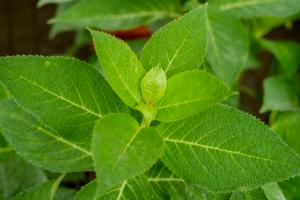Who Discovered Tomato Plants?
Tomatoes are an essential ingredient in many cuisines worldwide, but have you ever wondered who discovered this versatile fruit? The history of tomato cultivation and discovery is a fascinating tale that spans over centuries and continents.
Origins of Tomato Plants
Tomatoes originated in the Andean region of South America, and the indigenous people of the region cultivated them as early as 500 BC. They believed tomatoes had medicinal properties and used them to treat a range of ailments from fever to stomach issues.
Alternatively, some evidence suggests that wild tomato plants grew in Mexico thousands of years before cultivated varieties existed.
Early History of Tomato Plants
Tomatoes didn't find their way to Europe until Spanish explorer Hernan Cortes brought tomato seeds back from his travels to Mexico in the early 16th century. The first recorded mention of tomatoes in Europe occurred in an Italian herbal published in 1544. However, many Europeans were wary of the fruit, and they were thought to be poisonous.
In fact, Europeans were not the first to consider tomatoes as dangerous. North American colonists believed the tomato was a member of the poisonous nightshade family and were reluctant to consume it. However, by the early 1800s, tomatoes had become widely used in Europe and America, thanks to many hardworking farmers.
Tomatoes' Rise in Popularity
Tomatoes gradually became more popular across Europe after the late 1700s. Thomas Jefferson famously imported seeds and began growing tomatoes in his garden in Virginia in the 1780s, helping to accelerate the fruit's popularity in the United States.
By the 1800s, tomatoes had become an essential ingredient in many European dishes, especially Italian cuisine, and tomato sauce recipes were first documented in Italy in the late 18th century.
Scientific Discovery of Tomato Plants
In the mid-19th century, the scientific community discovered that tomatoes belonged to the Solanaceae or nightshade family, which includes poisonous plants like belladonna and deadly nightshade. Despite this revelation, tomatoes continued to be popular, and researchers found that tomatoes contained valuable vitamins and minerals like vitamin C and potassium.
Today, tomato plants are widely cultivated worldwide, and there are hundreds of different types of tomatoes varying in size, shape, and color. The most common varieties of tomatoes include cherry, grape, beefsteak, and Roma tomatoes. With their rich flavor and nutritional benefits, tomatoes have become an essential ingredient in many dishes worldwide.
Conclusion
In conclusion, the tomato's discovery story is a journey that spans centuries and continents. From their origins in South America to their worldwide cultivation, tomatoes continue to be an essential ingredient in cooking worldwide. Whether you enjoy them in a salad or in a rich tomato sauce, there is no denying that tomatoes have earned their place in modern cuisine.

 how many times do yo...
how many times do yo... how many planted tre...
how many planted tre... how many pine trees ...
how many pine trees ... how many pecan trees...
how many pecan trees... how many plants comp...
how many plants comp... how many plants can ...
how many plants can ... how many plants and ...
how many plants and ... how many pepper plan...
how many pepper plan...































